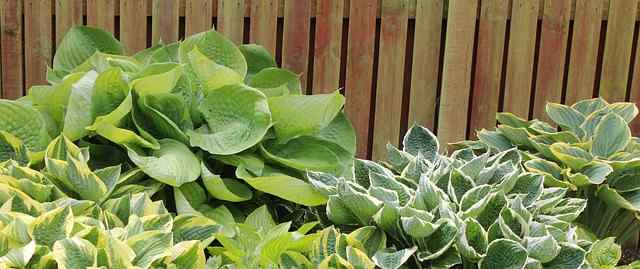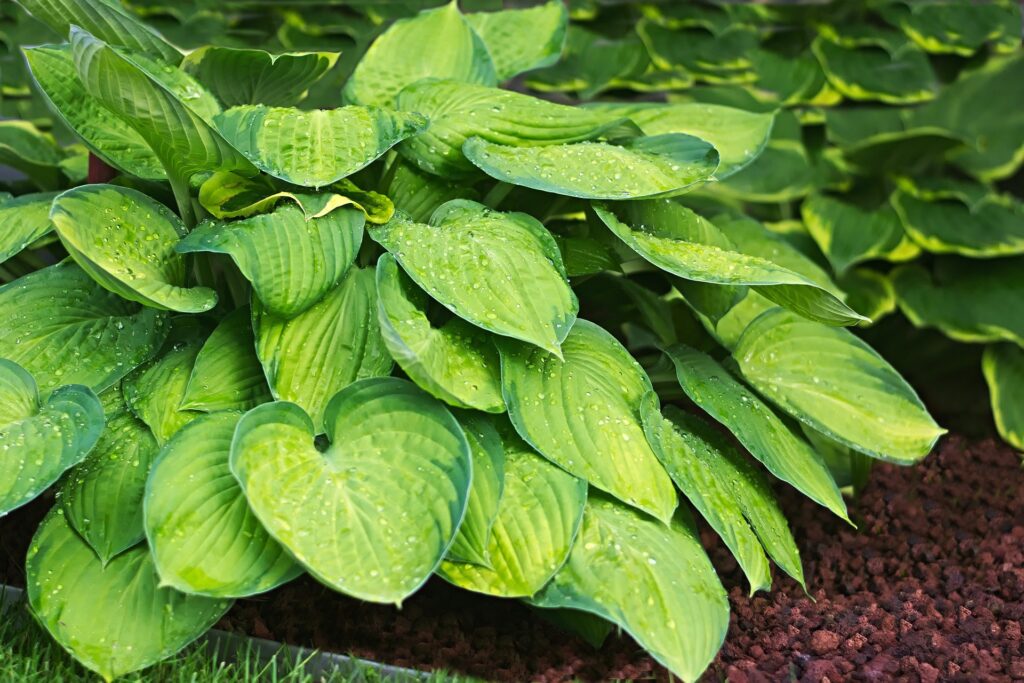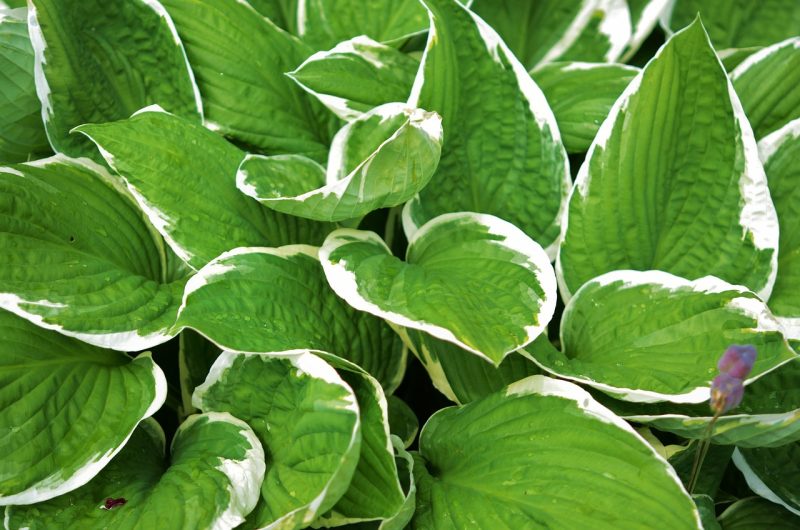In this post, we’ll dig into the world of hostas, discussing their ideal growing conditions while also addressing the true potential for thriving in sunny spots. We’ll cover everything from hosta varieties to planting techniques, care, and peculiar challenges that arise from sun exposure.
Understanding Hosta Basics

What Are Hostas?
Hostas are herbaceous perennials that belong to the Asparagaceae family. With roots tracing back to Asia, these plants are celebrated for their stunning foliage rather than their flowers, which usually appear in shades of violet or lavender. The leaves of hostas can vary widely in size, shape, color, and texture.
They thrive predominantly in USDA hardiness zones 3–8, although some varieties have been known to stretch a bit further. Hostas have gained popularity not just for their beauty but also for their resilience and adaptability in various landscapes.
Why Shady Conditions?
Historically, hostas have been cultivated as shade-loving plants. Their natural habitat includes woodland areas where they thrive under the canopy of trees. This adaptation allows them to efficiently capture light in lower light conditions through their large leaves. But as garden design trends evolve, many are left wondering if hostas can adapt to sunnier locales.
Exploring Sun Exposure in Hostas

Full Sun vs. Partial Shade
Before diving further into whether hostas can grow in full sun, it’s essential to make a clear distinction between different types of sun exposure:
Full Sun: Typically means six or more hours of direct sunlight, particularly during the warmer parts of the day.
Partial Shade: Often indicates a situation where plants receive 3-6 hours of sunlight, perhaps with some protective shade in the afternoon.
The Science Behind Light and Growth
Understanding the science of photosynthesis can help clarify why hostas have thrived in shaded environments. Photosynthesis requires light, carbon dioxide, and water to produce energy, which allows plants to grow. While many plants flourish under bright sunlight, too much exposure can lead to stress (including leaf burn) for shade-adapted species like hostas.
Can Hostas Thrive in Full Sun?

Varietals That Prefer More Sun
Gardening experts note that certain hosta varieties are surprisingly resilient and adaptable to more sun than others:
‘Guacamole’: Known for its bright green leaves edged with gold, this hosta tolerates more sun exposure than many other varieties.
‘Sum and Substance’: With its large, thick leaves, this hosta can handle some sun, although too much can lead to stress.
‘Francee’: A robust variety that, while still preferring shade, can adapt to several hours of direct sunlight.
While these varieties can tolerate more sun, it’s important to monitor their conditions closely.
Benefits of Sun Exposure
Some gardeners do embrace full sun exposure for their hostas, and there can be benefits:
Foliage Color: Exposure to sunlight can enhance the vibrant colors of some hostas, leading them to display richer, more saturated hues.
Reduced Pest Issues: Areas receiving more sunlight may have fewer pest problems, particularly slugs and snails, which prefer damp, shaded environments.
Stronger Growth: In certain conditions, exposure to sunlight can cause some hostas to grow more robustly, resulting in larger plants with denser foliage.
Planning for Success: How to Grow Hostas in Full Sun

Site Selection
While many hostas prefer cooler, shaded environments, identifying the right site for those in sunny locations is crucial. Choose a spot with some intermittent shade throughout the day, such as a location near taller plants or structures that provide afternoon relief. Morning sun is generally more manageable, as it allows for earlier warmth without extreme temperatures setting in.
Soil Requirements
Hostas thrive in well-drained, rich soil. To cultivate hostas in full sun, amend the soil with organic material like compost or well-rotted manure to enhance moisture retention. It’s essential that the soil maintains consistent moisture, especially if the area receives full sun exposure, which tends to dry out the soil more quickly.
Watering Wisely
Given that hostas in full sun will require more hydration, a robust watering schedule is essential. Observe the soil moisture regularly and aim to maintain an even level of moisture, particularly in the warmer months. Early morning watering is generally the best practice, as it allows foliage to dry before evening, reducing the risk of fungal diseases.
Mulching for Moisture Retention
Applying a quality organic mulch, like shredded bark, can help in various ways, particularly in sunny conditions. Mulch not only retains soil moisture but also helps to moderate soil temperatures. As the mulch decomposes, it enriches the soil, benefiting the hostas over time.
Common Challenges When Growing Hostas in Full Sun

Leaf Burn and Stress
One of the most significant challenges hostas face in full sun is the risk of leaf burn. The larger, delicate leaves may not withstand extreme sunlight without some protection. This can lead to crispy edges or yellowing that can detract from their overall aesthetic appeal.
Pest Problems Shifting
While sun exposure may reduce slug issues, it can also introduce other pests that thrive in warmer environments, like aphids. Regular monitoring and proactive management are necessary to keep these new challenges at bay.
Need for More Frequent Care
Full sun hostas may require more diligent care, including increased watering and sensitivity to signs of stress. Gardeners may find themselves more engaged in their maintenance routines, especially during the hottest months of the year.
Gardening Techniques for Full Sun Hostas

Strategic Planting
When planning your garden, consider planting hostas interspersed with taller sun-tolerant plants. This arrangement can provide seasonal shade as the taller plants grow and develop their foliage.
Companion Planting
When planting hostas in sunnier sites, companion planting can help to create a balanced environment. Pair them with sun-loving plants that can provide certain levels of shade or cover, such as daylilies or ornamental grasses. This way, you create a microclimate that keeps temperature variations moderated.
Seasonal Adjustments
If you notice your hostas are struggling in full sun, consider seasonal adjustments. Transplanting them to a location with more partial shade – even if that means losing a current planting setup – can help rejuvenate them.
Is It Worth the Risk? Weighing Your Options

The Beauty of Diversity
Gardening allows for experimentation and creativity. For some, the challenge of growing hostas in full sun may lead to innovative results and uniquely stunning designs. It’s worth recognizing that every gardener’s conditions are different, and personal satisfaction should guide your choices.
Reservations for New Gardeners
If you’re new to gardening or still finding your way with hostas, sticking to their preferred conditions may yield better initial results. It’s essential to develop a strong foundation of knowledge about growing conditions before venturing into the nuances of sun exposure.
Conclusion
The question of whether hostas will grow in full sun is a nuanced one. While traditionally regarded as shade-loving plants, certain hosta varieties can indeed adapt to sunnier conditions with the right care and attention.
For those willing to take the plunge, growing hostas in full sun can offer its own rewards—stunning foliage, less pest activity, and a chance to experiment with new horticultural strategies. The key lies in understanding your specific garden environment and tailoring your care methods accordingly.





